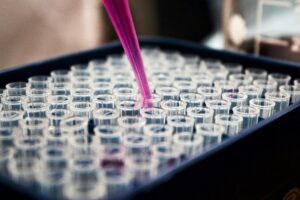Hazardous chemicals hinder the recycling of plastic
The escalating global plastic crisis has led to an urgent need for effective recycling solutions. However, a recent report by the Swedish Chemicals Agency casts light on a major obstacle: hazardous chemicals within plastics, which significantly hinder recycling processes.
In Sweden alone, where the annual consumption of plastic exceeds 1.3 million tons, less than 10% is recycled. The root of this challenge lies in the various chemicals added to plastics. These substances, designed to enhance qualities like flexibility, flame resistance, and durability, present significant risks to both human health and the environment.
The report identifies five key product groups abundant in plastics: packaging, construction products, vehicles and tires, electrical equipment, and wind turbine blades. Among these, plastic packaging shows the most promise for recycling, primarily due to lower levels of harmful additives. This finding is crucial as it highlights the varying degrees of recyclability within different plastic products, emphasizing the need for targeted strategies in recycling practices.
A significant part of the problem stems from the chemical additives used in plastics. These additives, while improving product performance, can be toxic, persist in the environment, and accumulate in living organisms. The presence of these chemicals complicates the recycling process, as they can be released into the environment or end up in new products made from recycled plastics. This raises concerns about the safety of recycled plastic products, particularly those that come into contact with food or are used in sensitive applications.
The report by the Swedish Chemicals Agency underscores the need for a paradigm shift in how we produce and recycle plastics. It calls for adherence to stringent chemical legislation to ensure that plastics are safe and recyclable. However, the report also notes that compliance with current laws may not be enough. Some substances that are currently allowed could become restricted in the future, impacting their use in new products.
To address these challenges, the report suggests strengthening information requirements on chemicals used in plastics. It advocates for comprehensive evaluations of these substances and proposes permit requirements and bans for particularly dangerous chemicals within the EU. Additionally, the report emphasizes the need for enhanced market control, especially for imported goods, where the presence of banned substances is a common issue.
This situation is not unique to Sweden. It reflects a global challenge in plastic recycling. The widespread use of hazardous chemicals in plastics is a worldwide concern, complicating recycling efforts and posing risks to human health and the environment. As countries and industries worldwide strive to improve plastic recycling rates, understanding and addressing the chemical composition of plastics becomes increasingly important.
The implications of this report extend beyond recycling. It highlights the need for a holistic approach to plastic management, encompassing design, production, use, and end-of-life disposal. Manufacturers are urged to consider the entire life cycle of their products, choosing safer chemicals and designing plastics that are easier to recycle. Consumers, on the other hand, play a role in demanding and choosing products made from safe and recyclable materials.
Educational and policy initiatives are also vital in this journey. Raising awareness about the types of plastics and their recyclability can influence consumer choices and disposal habits. On the policy front, governments can incentivize the use of safer and more recyclable materials, while imposing stricter regulations on harmful chemicals in plastics.
The report from the Swedish Chemicals Agency is a wake-up call to the complexities surrounding plastic recycling. It sheds light on the often-overlooked aspect of chemical additives in plastics and their impact on recycling efforts. As we move towards a more sustainable and circular economy, understanding and addressing these challenges is crucial. It requires a concerted effort from governments, industries, and individuals to transition to safer, more sustainable plastic use and recycling practices.
In conclusion, the path to effective plastic recycling is fraught with challenges, but it is a journey worth taking. By addressing the issue of hazardous chemicals in plastics, we can pave the way for a more sustainable future, reducing environmental impact and safeguarding human health. The insights from the Swedish Chemicals Agency’s report offer valuable guidance in this endeavor, calling for a collaborative approach to overcoming the obstacles in plastic recycling.




